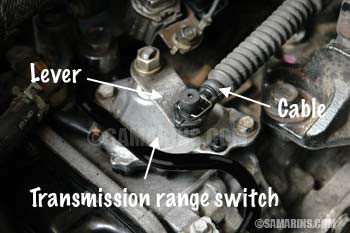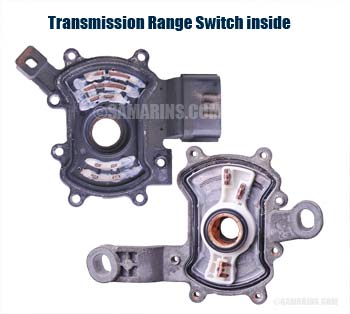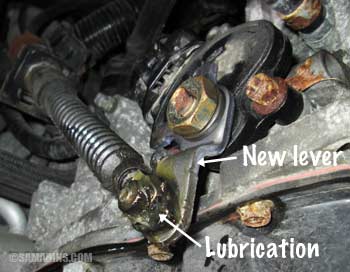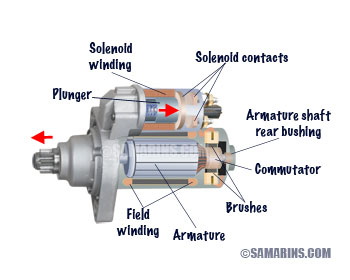2 Reasons Why a Car Won't Start in Park but Starts in Neutral
Updated: July 07, 2021
For safety reasons, the engine in your car can only be started when the automatic transmission is in Park or Neutral position. How does your vehicle know if the transmission is in Park or Neutral? There is a transmission range (position) switch or sensor that in most cars, located on the transmission. It's also known as a neutral safety switch.
It monitors which gear the transmission is in and sends this information to the vehicle computer, or PCM.
1. Mechanical problem with the shifter cable or link
In most cars, the transmission shifter inside the vehicle is connected to the vehicle transmission through a mechanical link, such as a cable or linkage. When you move the shifter inside the car, the cable/linkage moves a little lever connected to the selector shaft of the transmission. The first common problem with this setup is when the cable or some other part of the mechanism rusts, wears out or becomes loose. For example, see this photo of a rusted shifter cable connection at the transmission side.Sometimes, a transmission shifter inside the car becomes sticky and hard to move too. This restricts the movement of the cable and causes the problem where the shifter inside the car is in Park, but the lever at the transmission range switch (in the photo) does not move far enough. As a result, the transmission range switch cannot confirm that the transmission is in Park causing the vehicle to start in Neutral, but not to start in Park.
2. Electrical problem with the transmission range switch
The transmission range switch have several sliding electrical contacts inside, see the photo. When they wear out, the transmission range switch may work intermittently. For example, problems with the transmission range switch are fairly common in some Kia/Hyundai vehicles. A problem with the transmission range switch connector or wiring can also cause the same issue.Symptoms of of both of these problem is when the "P" indicator on the dash sometimes doesn't light up when the transmission in Park or you have to shift it back and forth a few times before the "P" indicator lights up.
If it's a mechanical (first) problem, the transmission shifter may feel harder to move. When it's an electrical problem with the transmission range switch, the shifter may feel normal, but the PRNDL display on the dash will work erratically.
Testing: To diagnose the problem, mechanics first check the mechanical connection (link or cable) to the transmission range switch. If it's OK and the shifter moves freely, mechanics test the transmission range switch with the scan tool.
The repair depends on the diagnosis. If there is minor rust at the cable/linkage, simply lubricating the affected area might help. In other cases, the rusted part might need to be replaced. For example, in this Mazda in the photo, a rusted lever at the transmission range switch has been replaced and the connection lubricated. It's a $20 part and a fairly simple repair.
Another example: In some older Ford trucks with the column shifter, one of the brackets that holds the linkage under the dash can become loose and the truck would not start in Park - watch these videos describing the repair. The symptom is the same, the dash indicator is not lined up with the shifter position.
Advertisement
A bad transmission range (position) switch must be replaced. For most cars, the part is not very expensive. If it's mounted outside of the transmission, it's easy to replace. The transmission range switch t also needs to be properly adjusted after the replacement. After the repair, it's a good idea to verify that all gears shift properly and the transmission position indicator on the dash shows the correct position of the shifter.




